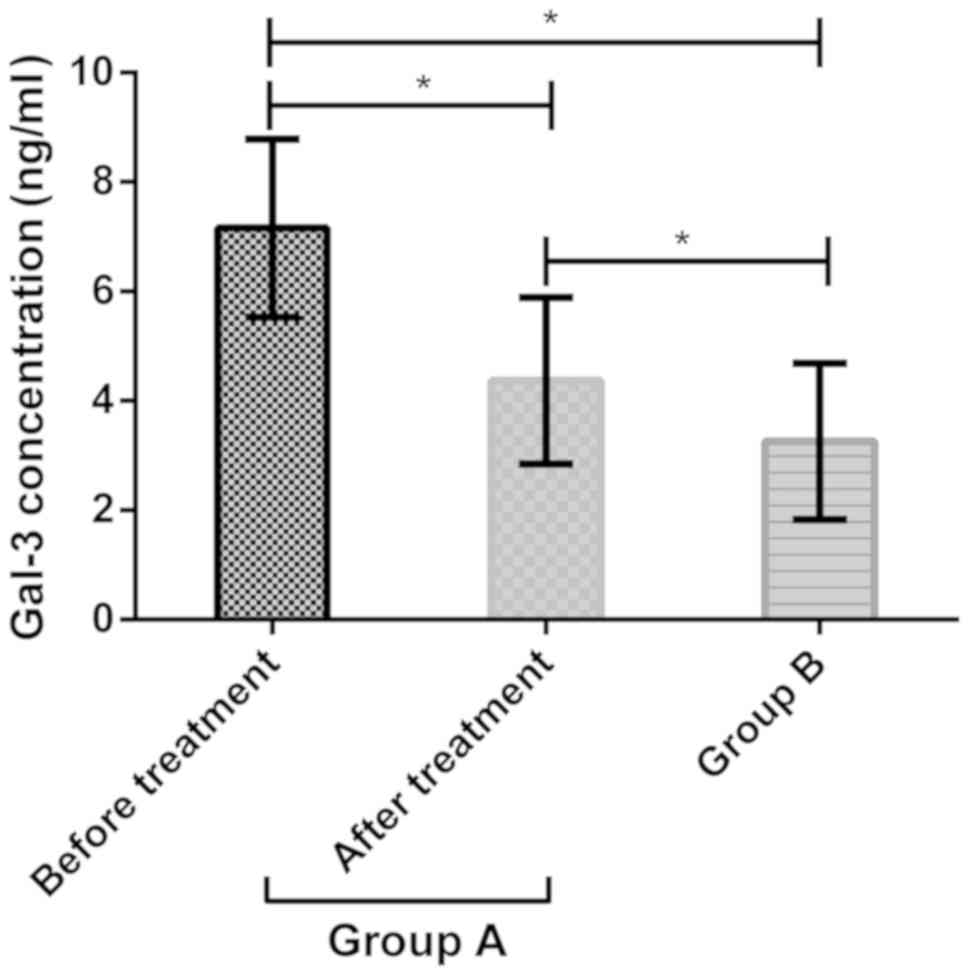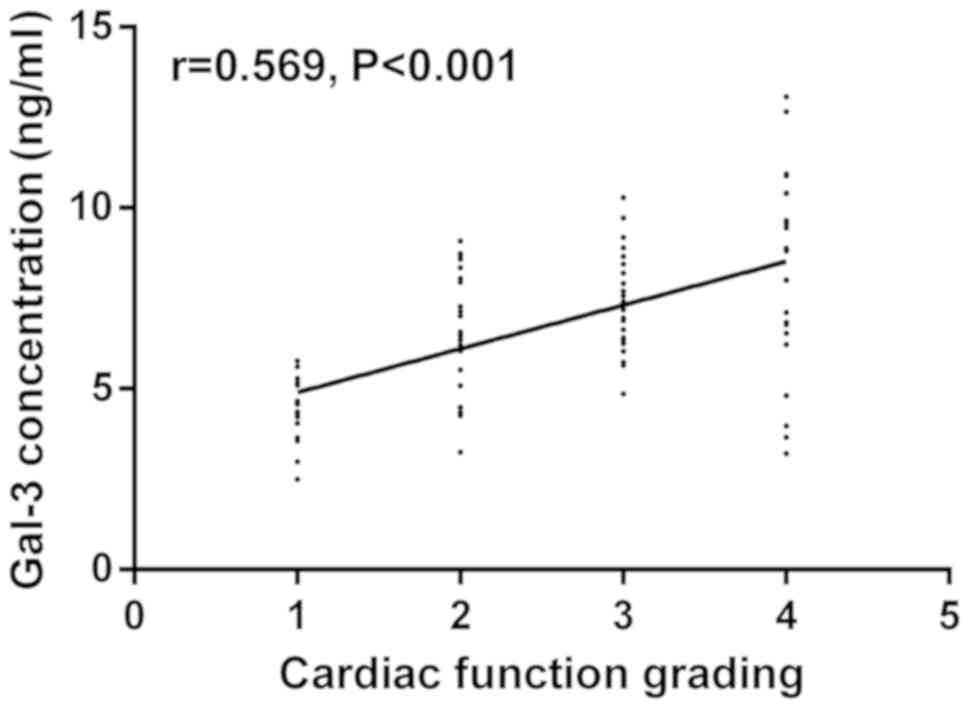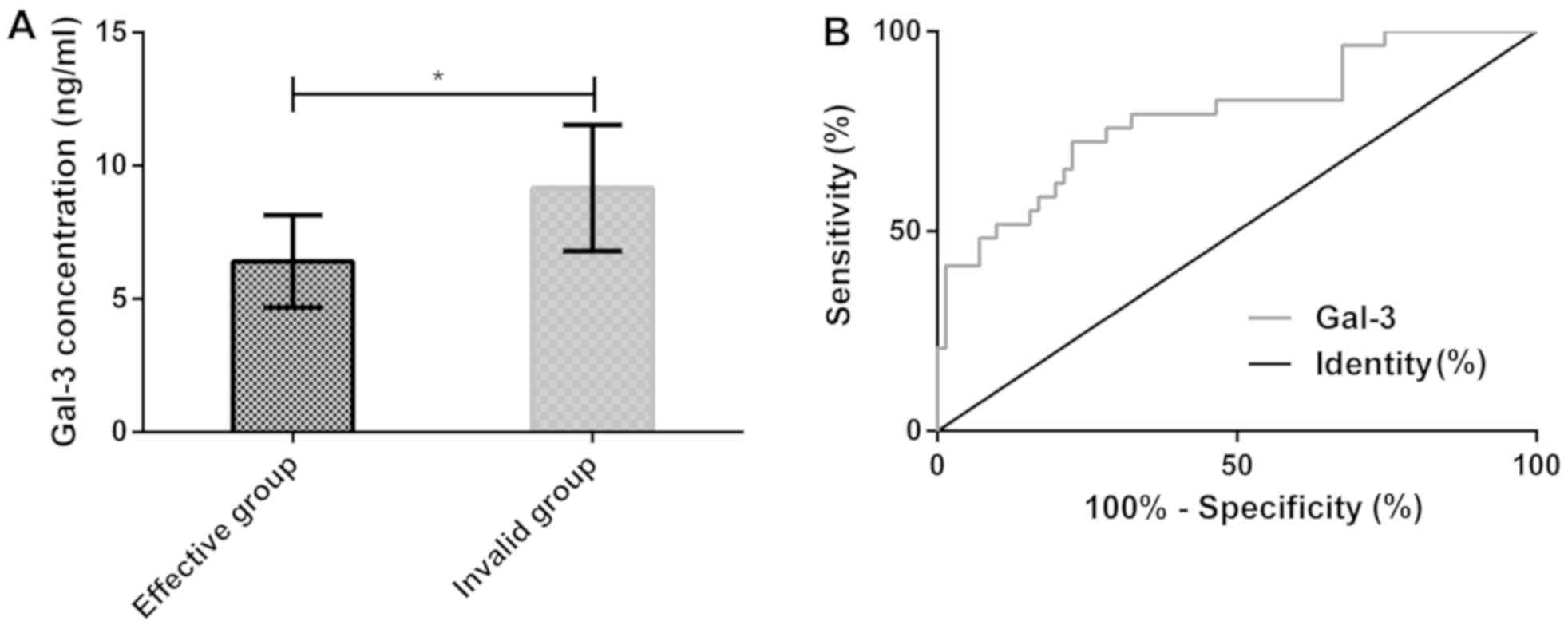|
1
|
Leung AA, Nerenberg K, Daskalopoulou SS,
McBrien K, Zarnke KB, Dasgupta K, Cloutier L, Gelfer M,
Lamarre-Cliche M, Milot A, et al CHEP Guidelines Task Force, :
Hypertension Canada's 2016 Canadian hypertension education program
guidelines for blood pressure measurement, diagnosis, assessment of
risk, prevention, and treatment of hypertension. Can J Cardiol.
32:569–588. 2016. View Article : Google Scholar : PubMed/NCBI
|
|
2
|
Oluboka OJ, Katzman MA, Habert J, McIntosh
D, MacQueen GM, Milev RV, McIntyre RS and Blier P: Functional
recovery in major depressive disorder: Providing early optimal
treatment for the individual patient. Int J Neuropsychopharmacol.
21:128–144. 2018. View Article : Google Scholar : PubMed/NCBI
|
|
3
|
Soullier C, Niamkey JT, Ricci JE,
Messner-Pellenc P, Brunet X and Schuster I: Hypertensive patients
with left ventricular hypertrophy have global left atrial
dysfunction and impaired atrio-ventricular coupling. J Hypertens.
34:1615–1620. 2016. View Article : Google Scholar : PubMed/NCBI
|
|
4
|
Ravassa S, López B, Querejeta R, Echegaray
K, San José G, Moreno MU, Beaumont FJ, González A and Díez J:
Phenotyping of myocardial fibrosis in hypertensive patients with
heart failure. Influence on clinical outcome. J Hypertens.
35:853–861. 2017. View Article : Google Scholar : PubMed/NCBI
|
|
5
|
Nazário Leão R and Marques da Silva P:
Diastolic dysfunction in hypertension. Hipertens Riesgo Vasc.
34:128–139. 2017. View Article : Google Scholar : PubMed/NCBI
|
|
6
|
Ginelli P and Bella JN: Treatment of
diastolic dysfunction in hypertension. Nutr Metab Cardiovasc Dis.
22:613–618. 2012. View Article : Google Scholar : PubMed/NCBI
|
|
7
|
Nadruz W, Shah AM and Solomon SD:
Diastolic dysfunction and hypertension. Med Clin North Am.
101:7–17. 2017. View Article : Google Scholar : PubMed/NCBI
|
|
8
|
Zhang Y, Sun N, Jiang X and Xi Y:
Comparative efficacy of β-blockers on mortality and cardiovascular
outcomes in patients with hypertension: A systematic review and
network meta-analysis. J Am Soc Hypertens. 11:394–401. 2017.
View Article : Google Scholar : PubMed/NCBI
|
|
9
|
Wallentin F, Wettermark B and Kahan T:
Drug treatment of hypertension in Sweden in relation to sex, age,
and comorbidity. J Clin Hypertens (Greenwich). 20:106–114. 2018.
View Article : Google Scholar : PubMed/NCBI
|
|
10
|
Anyfanti P, Gkaliagkousi E, Gavriilaki E,
Triantafyllou A, Dolgyras P, Galanopoulou V, Aslanidis S and Douma
S: Association of galectin-3 with markers of myocardial function,
atherosclerosis, and vascular fibrosis in patients with rheumatoid
arthritis. Clin Cardiol. 42:62–68. 2019. View Article : Google Scholar : PubMed/NCBI
|
|
11
|
González GE, Rhaleb NE, D'Ambrosio MA,
Nakagawa P, Liao TD, Peterson EL, Leung P, Dai X, Janic B, Liu YH,
et al: Cardiac-deleterious role of galectin-3 in chronic
angiotensin II-induced hypertension. Am J Physiol Heart Circ
Physiol. 311:H1287–H1296. 2016. View Article : Google Scholar : PubMed/NCBI
|
|
12
|
Jagodzinski A, Havulinna AS, Appelbaum S,
Zeller T, Jousilahti P, Skytte-Johanssen S, Hughes MF, Blankenberg
S and Salomaa V: Predictive value of galectin-3 for incident
cardiovascular disease and heart failure in the population-based
FINRISK 1997 cohort. Int J Cardiol. 192:33–39. 2015. View Article : Google Scholar : PubMed/NCBI
|
|
13
|
Meijers WC, van der Velde AR and de Boer
RA: ST2 and galectin-3: Ready for prime time? EJIFCC. 27:238–252.
2016.PubMed/NCBI
|
|
14
|
Ghorpade AG, Shrivastava SR, Kar SS,
Sarkar S, Majgi SM and Roy G: Estimation of the cardiovascular risk
using World Health Organization/International Society of
Hypertension (WHO/ISH) risk prediction charts in a rural population
of South India. Int J Health Policy Manag. 4:531–536. 2015.
View Article : Google Scholar : PubMed/NCBI
|
|
15
|
Wang Z, Chen Z, Zhang L, Wang X, Hao G,
Zhang Z, Shao L, Tian Y, Dong Y, Zheng C, et al China hypertension
survey investigators, : Status of hypertension in China: Results
from the China hypertension survey, 2012–2015. Circulation.
137:2344–2356. 2018. View Article : Google Scholar : PubMed/NCBI
|
|
16
|
Bansal M, Kasliwal RR and Trehan N:
Relationship between different cardiovascular risk scores and
measures of subclinical atherosclerosis in an Indian population.
Indian Heart J. 67:332–340. 2015. View Article : Google Scholar : PubMed/NCBI
|
|
17
|
Deckx S, Heggermont W, Carai P, Rienks M,
Dresselaers T, Himmelreich U, van Leeuwen R, Lommen W, van der
Velden J, Gonzalez A, et al: Osteoglycin prevents the development
of age-related diastolic dysfunction during pressure overload by
reducing cardiac fibrosis and inflammation. Matrix Biol.
66:110–124. 2018. View Article : Google Scholar : PubMed/NCBI
|
|
18
|
Maiolino G, Rossitto G, Pedon L, Cesari M,
Frigo AC, Azzolini M, Plebani M and Rossi GP: Galectin-3 predicts
long-term cardiovascular death in high-risk patients with coronary
artery disease. Arterioscler Thromb Vasc Biol. 35:725–732. 2015.
View Article : Google Scholar : PubMed/NCBI
|
|
19
|
Calvier L, Legchenko E, Grimm L, Sallmon
H, Hatch A, Plouffe BD, Schroeder C, Bauersachs J, Murthy SK and
Hansmann G: Galectin-3 and aldosterone as potential tandem
biomarkers in pulmonary arterial hypertension. Heart. 102:390–396.
2016. View Article : Google Scholar : PubMed/NCBI
|
|
20
|
Singh T, Pilania M, Jat GS and Kumar R:
Ambiguity about selection of cardiovascular risk stratification
tools: Evidence from a North Indian rural population. Indian J
Community Med. 43:170–174. 2018.PubMed/NCBI
|
|
21
|
Wu H, Chen L, Xie J, Li R, Li GN, Chen QH,
Zhang XL, Kang LN and Xu B: Periostin expression induced by
oxidative stress contributes to myocardial fibrosis in a rat model
of high salt-induced hypertension. Mol Med Rep. 14:776–782. 2016.
View Article : Google Scholar : PubMed/NCBI
|
|
22
|
Hogas S, Bilha SC, Branisteanu D, Hogas M,
Gaipov A, Kanbay M and Covic A: Potential novel biomarkers of
cardiovascular dysfunction and disease: Cardiotrophin-1, adipokines
and galectin-3. Arch Med Sci. 13:897–913. 2017. View Article : Google Scholar : PubMed/NCBI
|
|
23
|
Gorostidi M and de la Sierra A:
Combination therapy in hypertension. Adv Ther. 30:320–336. 2013.
View Article : Google Scholar : PubMed/NCBI
|
|
24
|
Shah SJ and Stafford RS: Current trends of
hypertension treatment in the United States. Am J Hypertens.
30:1008–1014. 2017. View Article : Google Scholar : PubMed/NCBI
|
|
25
|
Taddei S: Combination therapy in
hypertension: What are the best options according to clinical
pharmacology principles and controlled clinical trial evidence? Am
J Cardiovasc Drugs. 15:185–194. 2015. View Article : Google Scholar : PubMed/NCBI
|
|
26
|
Gradman AH: Strategies for combination
therapy in hypertension. Curr Opin Nephrol Hypertens. 21:486–491.
2012. View Article : Google Scholar : PubMed/NCBI
|
|
27
|
Calvier L, Martinez-Martinez E, Miana M,
Cachofeiro V, Rousseau E, Sádaba JR, Zannad F, Rossignol P and
López-Andrés N: The impact of galectin-3 inhibition on
aldosterone-induced cardiac and renal injuries. JACC Heart Fail.
3:59–67. 2015. View Article : Google Scholar : PubMed/NCBI
|
|
28
|
Vergaro G, Prud'homme M, Fazal L, Merval
R, Passino C, Emdin M, Samuel JL, Cohen Solal A and Delcayre C:
Inhibition of galectin-3 pathway prevents isoproterenol-induced
left ventricular dysfunction and fibrosis in mice. Hypertension.
67:606–612. 2016. View Article : Google Scholar : PubMed/NCBI
|

















